|
|
Advanced Physics Projects for School & Home |
|---|---|
| opensource, real science on a budget |
|
|
Advanced Physics Projects for School & Home |
|---|---|
| opensource, real science on a budget |
2025 ... 2024 ... 2023 ... 2022 ... 2021 ... 2020 ... 2019 .. 2018 .. 2017
---------------------------
Submitted article describing digital rotary encoder system to U.K. Faceters Guild magasine - early draft and code on Downloads page.
---------------------------
This code evolved out of Raspberry PI projects to monitor solar wind, solar flares and infrasound. I have noticed that it has attracted some interest in its own right having been used by others for their own projects - thus I decided to 'generalise' the code and release it in its own right - see STEM Projects above
{Also recoded this site. Lost the fancy drop-down projects menu which was getting time-consuming to maintain.}
---------------------------
Been working on a new precision rotary encoder for my faceter. This is based on a US Digital quadrature optical encoder for which I had to provide an end-user certificate to import!. Angle is calculated on an Arduino Uno which drives a rather nice colour OLED. System will accurately measure rotation down to 1/40th of a degree. Coding aside the main problem is sorting out a suitable enclosure.
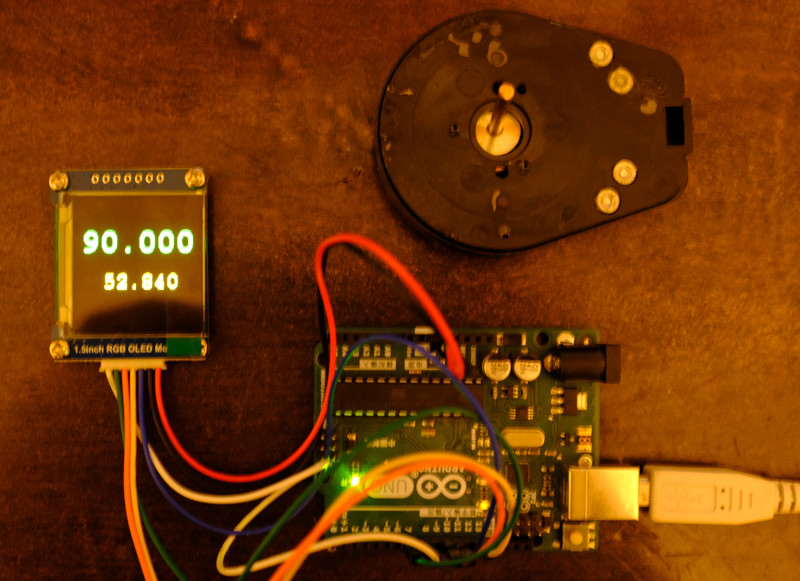
---------------------------
After extensive testing the drift is much less than we thought. However performed a major rewrite of the RPI's monitoring code which should increase precision by a mean factor of 12. The main change is that data is stored in hourly blocks with a timestamp at the start of each block. The RPI code has also been overhauled and simplified.
This has required a significant rewrite of the analyser code which is used on a PC to analyse downloaded data. Both are now being tested but looking good. When we are happy we'll update the code in the Downloads section of this site.
---------------------------
Looking at the first data from the two separated rigs we have identified a drift problem. The system interrogates the pressure sensor at 40Hz storing the pressures daily in a .miniseed format file. This contains only one timestamp - at the start. Comparing the three rigs we see a drift over 24hrs of a few minutes. This may be due to using an interactive OS on the PI or occasional failure to read from the sensor. A number of solutions have been considered, some more elegant than others.
One could improve the regularity of the timestamps. For example by using an Arduino to read the sensor, packaging data before sending to the PI. Elegant but greatly adds to hardware complexity.
Another solution is the include timestamps at every datapoint, i.e. accept that the sequence will not be regularly spaced. This is simple to achieve in software though markedly increases the size of the datafiles
We're going with the second option. We have considered saving data in smaller blocks, i.e with more regular timestamps. Initially rejected due to to complexity of accessing stored data, We could easily create our own data format with, say timestamps every minute but prefer to use standard simple seismic data formats such as SEED or SAC
Hope to complete within the week.
---------------------------
This evening Rig Beta, equipped with a real time clock was moved to a location 2340m away in the centre of Guisborough.
The lads have been intending this for a couple of weeks as part of their investigation into the feasibility of observing coherent signals over a distance corresponding to the wavelength of low-frequency signals.
Unfortunately the property currently lacks Internet access so data will be periodically downloaded manually. We could strap it to an old mobile phone though this would add to cost and complexity- something we wish to avoid in a school/college project. However a phone-line may connected in September. Thunderstorms are forecast for the next couple of days so we may get something interesting soon - or maybe not.
On seeing the forecast we bundled into the car at 22:00hrs rig and power-tools in hand :-)
---------------------------
Again, an early snapshot. Deciding that jumping straight into proton precession was a bit heavy in novel concepts I started with modelling a gyroscope - one of the harder concepts in A-level/early degree physics. I'm rather impressed with this approach. Personally I now 'get' gyroscopes with the maths seeming intuitive - not sure I did before. Learning physics through coding may well be the way to go.
B.t.w. this is an ab-initio simulation. Only input values are g, rotor mass, rotor radius, starting angle from vertical and angular velocity. Moment of intertia and angular momentum are then calculated. Resulting motion arises from resolving the moments on the pivot all realised in vector form .. chuffed.
I may add a couple of extra features, some stripe to indicate rotor rotati on, maybe sliders to change g, mass, angular velocity. Need to think on nutation as well.
---------------------------
V. early screenshot from a later exercise of the course. Code simulates Larmor Precession of a proton in an external magnetic field - the vertical grey line. Red and blue lines represent proton's magnetic dipole. Under development but should be easily able to illustrate relaxation of proton such as used in NMR imaging and spectroscopy. This ties in with another project we have to build a proton-precession magnetometer/spectrometer. Coding pulls in a lot of concepts such as angular momentum, torque and B fields - which need to be processed in vector form - this however is surprisingly straightforward.
I wish I'd had access to this sort of simulation software during late A-levels and early degree. being a bit of a thicko I'm not sure I ever really got it. I do now :-) .
---------------------------
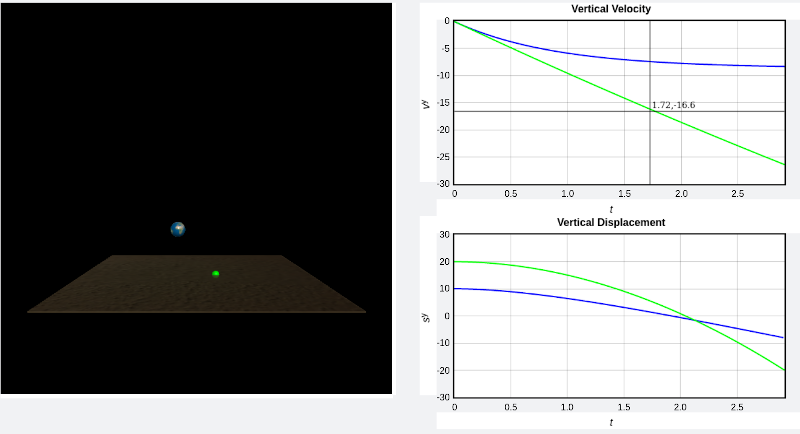
https://dx.doi.org/10.1088/1361-6552/ab9e9d
---------------------------
Cracking on.
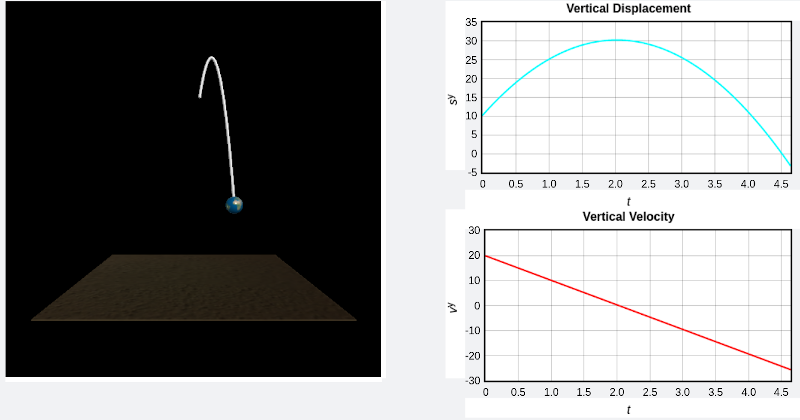
---------------------------
Oddly high traffic on the infrasound plots pages. Hundreds of landings a day, apparently on the plots download page. Just curious, would someone like to enlighten me? If anyone is interested in long-term infrasound measurements then I have the raw data files for the past three years - drop me a line.
Still no clearer after playing around with a website log viewer. However have decided that life is definitely too short to look at logs. Surprising amount of info in there, some countries seem disproportinally well represented.
20/7/20 - update after digging. Fascinating as my doctoral thesis is I became puzzled as to why someone would download it over 1800 times at 4Mb a time. Requesting I.P. was listed as a known russian hacker - some sort of attempt to crash the server perchance?
---------------------------
For many years when teaching A-level physics & computing I ran a variety of ‘STEM’ enrichment activities generally for physics students. I am a strong believer in enthusiasm led learning. One of the more successful of these being 'Coding for Scientists' (my background and research outside the day-job being in computational physics). Quite a number of students have told me that their university interviews were dominated by discussion of this extra-curricula work.
Based on this, over the summer I intend completing a big project - which I have been considering for some time. A comprehensive course in computational pre-university physics.
Students learn to code by building simulations of various physical phenomena. Notes and readings encourage students deeper into understanding physical systems as they extend their initial simulation. Output displays as an interactive '3d' scene in a web-browser.
Given the rather obsessive nature of programming, students do immerse themselves in the physics of the model. I feel that we can touch the greater bulk of the A-level physics syllabi in approximately 10 modelling scenarios. A complete 1 year STEM course which teaches new skills, reinforces taught content and encourages further study. Should be well suited to supported distance learning.
---------------------------
I am updating the digital inclinometer I built for my (gemstone) faceting machine. Rather pleased with v1 which has been in use for over a year. The system uses a 'US Digital' Optical encoder, signal is processed by an Arduino Uno which drives a small display. The system measures to 1.5 arcsec (1/40 degree) which is about the effective practical limit allowing for flutter and flex in the machine.
I am adding a larger colour display, simplifying the code and adding new functionality. I am writing this up for the UK facaters guild magazine so will have to document it all ... even the code!
Waveshare: Nice little bright OLED for less than £20 -- running off an Arduino Uno.
---------------------------
The Robinson boys have been asked to shoot a short video for the Institute of Physics - Journal of Physics Education!
---------------------------
New Pi 4 is blisteringly fast.
Yesterday evening the Cleveland police helicopter, apparently a Eurocopter EC135 was hovering around our locale for a while. A nice signal picked up.
Interesting the three different windfilters (loft, foam block & porous hose) have very different responses. The boys may use this for their first analysis.

---------------------------
It looks like the very old Pi 1b that we used on Infrasound Rig Gamma is not up to to job. Have ordered a shiny new Pi 4.
---------------------------
A superficial examination of plots indicates that the porous hose rig under quiet conditions picks up about twice the pressure variation of the other two rigs - one in a loftspace and one outside with a foam block filter.
I'll leave a more detailed analysis of frequency response to the boys.
The data storage format may need reviewing. Presently the system interrogates the pressure sensor at ~40Hz. A full day's readings are saved in .mseed format with a header stating the start and end time, the values are saved as a binary block. Concerned that without more regular timestamps the system will drift over the course of a day. Placing a timestamp on every reading will result in overly large file sizes. hmm ... possibly hourly saves .. 24 files per day .. sod's law dictates that an interesting reading will occur right on the short hourly gap whilst the system starts a new record ...may leave that to collaboraters for further development. Part of my rationale with these projects is that they are not overly polished.
---------------------------
The boys are now starting work on their own investigation setting up a porous hose filter on the garage roof.
---------------------------
After over two years work submitted first infrasound monitor paper N o1 for review "Novel Infrasound Monitor Project - Real Geophysics Research on a Budget".
---------------------------
Students and I spent today completing the third infrasound monitor testing it with a porous hose windfilter alongside a foam block filter. Works a treat. The design has been refined down now, Rig 1 has been running for over 2 yrs, Rig 2 for 18 months without problems.
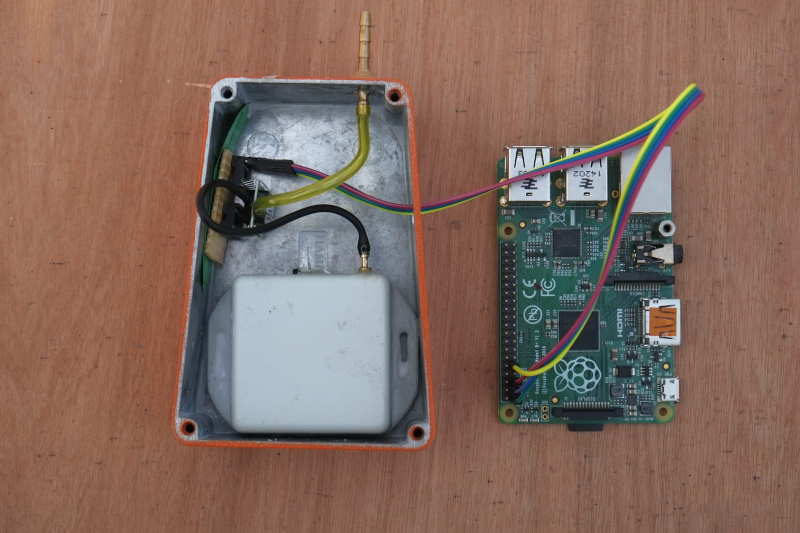
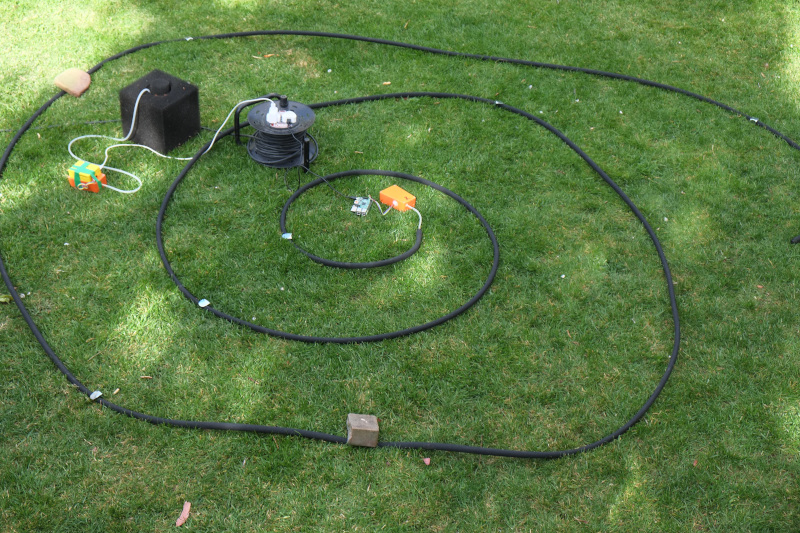
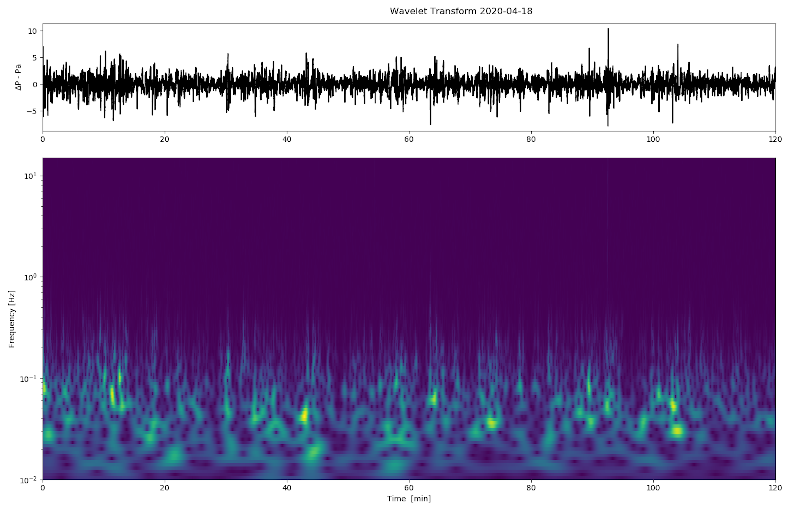
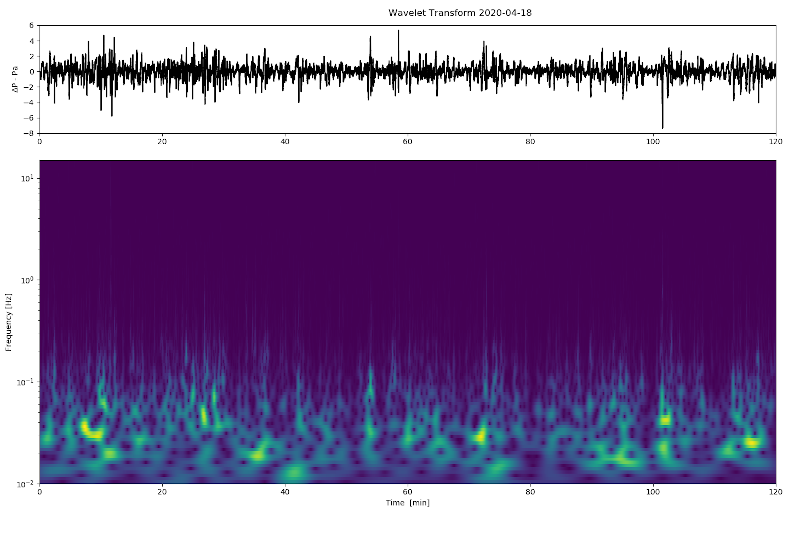
---------------------------
Part-time research in computational physics. Firstly the production of virtual diffraction patterns from atomistic models using the parallel processing offered by multi-core GPUs via CUDA. Early draft of paper#1.
---------------------------
The magnetometer is so sensitive as to affected by cars moving from my drive some 8m away, ideally it would be placed further from sources of interference. Whilst we are in lockdown it is producing very steady plots. Shown below is what one typically expects during solar quiescence.
---------------------------
Twice! Aurora Monitor here and Doctoral Thesis here doubly chuffed :-).
---------------------------
Starting to put together the final build of the geophysics infrasound monitor, rig 'gamma', before submitting a paper to the IOP. My two eldest lads are my test students who are helping debugging my printed instructions. Going well; actual physical construction takes about 2 hours though testing and configuring software takes somewhat longer.
I am rather pleased with this one. For less than £100 one can build a networked 24/7 Infrasound monitor with a resolution of 3.8x10 -2 Pa -- under one two-millionth of atmospheric pressure. It has been under test for over 2 years with no crashes, zero hardware and minimal software maintenance. The system is designed to be networked so is well suited to forming an area network with the hope of identifying significant events such as meteor breakup, another Buncefield, atmospheric nuclear explosions, earthquakes et al. Plenty of interest so far and I am hoping to run this out as a national network.


---------------------------